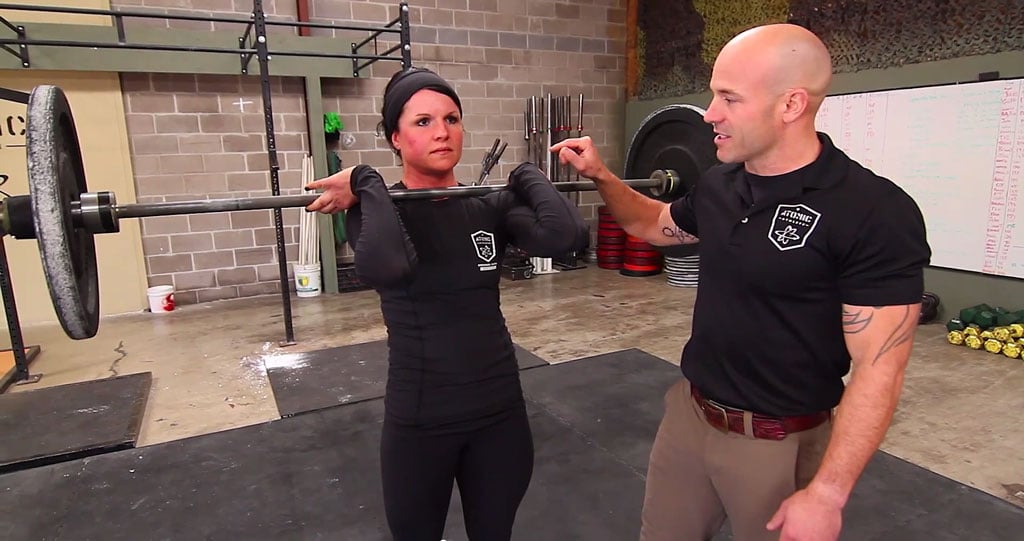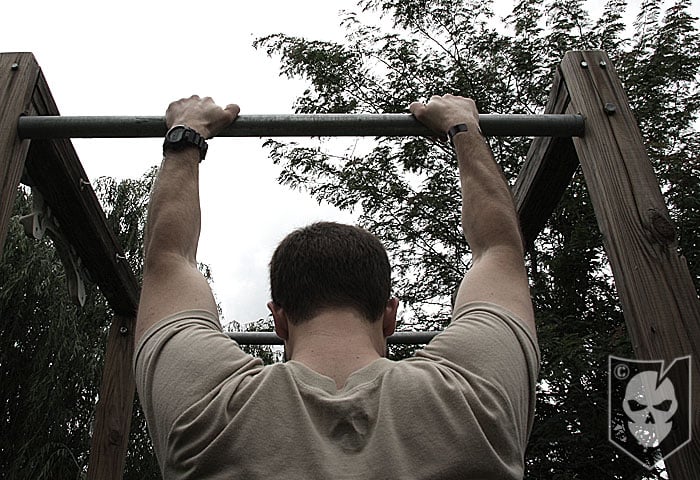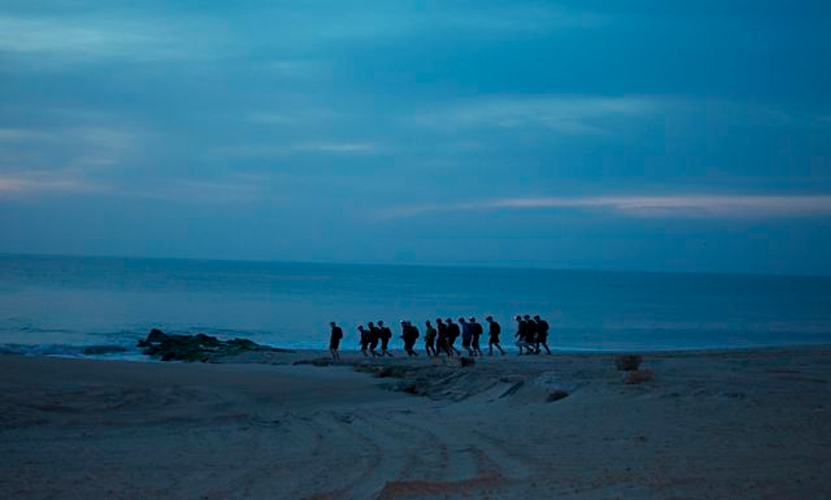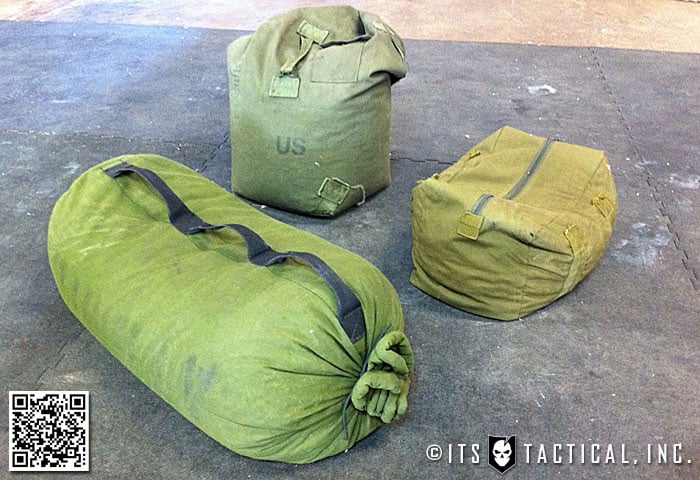Olympic Weightlifting: Master The Clean to Increase Overall Strength and Power
Olympic Weightlifting: Master The Clean to Increase Overall Strength and Power

In the previous two articles, Sandbags: Unconventional Training Tools for Functional Strength and Unconventional Training Tools: Tire and Drag Harnesses, we showed you how to make some cheap and effective training tools that you can use anywhere. Homemade equipment and bodyweight exercises will get you fairly fit, but to reach your true potential, you’ll need to train with a tool that you can progressively load as your strength increases. The best one to train strength is the barbell, hands down.
Most of us have done Squats, Deadlifts and the Bench Press at some point. If you played high school or college sports, you were probably taught a bastardized version of The Clean. Most of us, however, haven’t had the opportunity to do any Olympic Weightlifting or their variations. Olympic Weightlifting is an International Sport where lifters compete in two lifts: The Snatch and The Clean & Jerk. Until the past decade, this sport was pretty much unknown to most Americans, but with the rise of warehouse style gyms, there’s been a huge surge of athletes doing the lifts and coaches coaching them.
As a professional coach and gym owner, these two exercises and their variations are some of the most valuable tools in our toolbox. There are no other exercises that do a better job of training total body strength and power. I’m not going to rant on why you should do them, as there are already tons of articles online about that. Instead, we’ll talk about how to actually do them piece by piece and give you the fundamental knowledge to start incorporating them into your training.
Why You Should be Doing Them
- Train explosive power in the hips
- Increase strength
- Improve hip and shoulder mobility
- Increase the athlete’s proprioception / body awareness
- Hammers the core
The Clean
The Clean is taking the bar from the ground up onto the shoulders in one fluid movement. We’ll go over The Clean in this article and in the next one we’ll look at The Snatch.
What you need:
- A barbell
- Plates
- Flat and hard surface
- Collars
To get the most out of these exercises, you need to find a gym that has bumper plates and quality Olympic bars. A strength and conditioning facility, collegiate weight room or a Crossfit affiliate with some open gym time is your best bet. If you really want to invest in your fitness, you can pick up a bar and a set of bumper plates for about $500 from FringeSport.com or another quality vendor. Quality gear will last and actually has a pretty good resale value if it ends up collecting dust. That being said, you can still do these lifts in a typical globo-gym with cheap bars and metal plates.
The Rack
We’ll work from the top down on this. The rack is the position where you will receive the bar. A good rack will have the following characteristics.
- Hands are 1-2 inches wider than your shoulders
- Let the bar sit on the the meaty portion of your shoulders, the weight should be there and not in your hands
- Open and relax the hands, let the bar roll out towards the finger tips
- Your elbows should be up pointing towards the wall in front of you
- Head and eyes are straight ahead / slightly up
Common Mistakes:
- Not relaxing the grip on the bar (a death grip will keep the elbows from getting high enough)
- Holding the weight in the hands instead of letting it rest on the shoulders
The Hang Position
The Hang Position is a spot just above the knees that the barbell will pass as it comes from the ground up to the shoulders. This position is also the one you’ll work from when using smaller metal plates. The body’s position in the hang is very similar to that of the Romanian Deadlift so you may hear it referred to as the RDL position.
- Feet should be shoulder width apart
- Slightly bend the knees
- Set your back
- Hinge at the hips and lower the bar to just above the knee caps
- The chest and shoulders should be out in front of the bar
- You should be pressing the bar back into the thighs
- Head and eyes remain straight ahead / slightly up
Common Mistakes:
- Bending the knees too much (start with a slight bend, then hinge at the hips the rest of the way down)
Hang Power Clean
Now let’s take these two positions and connect them.
- Start in a good Hang Position
- Extend the hips forward and as the bar comes up the legs, add a little pop. The movement in the hips should be similar to that of jumping as high as you can.
- Shrug and drop under the bar. When you drop, rotate the elbows around quickly and relax your grip.
- You should receive the bar in a quarter squat with a good rack position.
- Stand up
Common Mistakes:
- Muscling the bar up by using the arms (use the power generated from the hips and drop under the weight)
Hang Clean (Squat Clean)
As the weight of the bar increases, it becomes harder and harder to pull the bar all the way up on to the shoulders. To lift heavier loads, you’ll need to receive the bar in a lower position. A full clean requires the athlete to drop into a squat and receive the barbell. The more experienced the athlete, the lower they’ll receive the bar. Newer athletes should start by catching it about parallel and riding it down into a deep squat.
- Execute a Hang Power Clean
- Instead of standing up right after receiving the barbell, you’ll continue to ride it down into a full squat
- Your feet will transition out to a slightly wider squat stance as you drop
- A full squat is as deep as you can go while maintaining a flat back and flat feet
- Make sure to maintain a good rack position with the elbows up
- Stand up
Common Mistakes:
- Jumping into too wide of a stance (a good squat stance will have the heels about shoulder width with the toes flared out)
- Letting the knees dive in as you stand up (keep your knees pushed out and feet flat)
From the Ground Up
Regardless of your equipment, you’ll need to learn all of the above before going from the ground. If you don’t have access to bumper plates, then the barbell will sit too low and you’ll need to stick with working from the hang position until you get to 135lbs and are using full size 45lbs plates.
- Feet should be about shoulder width with toes slightly flared out
- Your grip should be the same as the rack position. For most males, it’ll be about thumbs length from the knurling on the bar, the spot where it changes from smooth to rough
- Pull the bar into the shins
- Drop your butt and set your back
- The hips should be slightly higher then the knees
- Head and eyes should be straight ahead / slightly up
- Squeeze the bar off the ground slowly, keeping it close to the shins
- As the bar approaches the knees, push them back out of the way and start to apply some speed
- Once the bar passes the knees, you’ll be in the hang position and will do the same as a Hang Power Clean or Hang Clean
Common Mistakes:
- Rounded back (make sure the back is flat and tight)
- Jerking the bar off the ground (squeeze it off the ground nice and slow, apply force as it comes up the body)
Push Press
Once you feel comfortable with the Clean, you can add to the lift by going overhead with either a push press, power jerk, or a split jerk. The push press is the easiest of these and a good starting lift.
- Clean the barbell up into the rack position
- Take a breath
- Keeping a good rack position, bend the knees and dip down about 2 inches in a controlled manner
- Explode up using the legs
- Move the head back and out of the way
- Drive the barbell up and overhead into a locked out position
Common Mistakes:
- Using the shoulders too much (the shoulders should finish the lift but the lower body will be doing most of the work, think about putting the bar through the roof using the legs)
- Dropping the elbows (keep them up the entire time, as the barbell moves past the face, reacquire a traditional grip with thumbs wrapped)
- Dipping too deep (you only need to go down about 2 inches)
Metal Plates
Lack of bumper plates is no excuse to stop training these lifts. For loads under 135lbs, simply work from the hang position and be sure to place the barbell down gently. It’s strongly recommended to not do these exercises at Planet Fitness as they’ll definitely throw you out.
The Clean Complex
The Clean Complex is a warmup we do prior to any session that involves heavy cleans. It’s great because it breaks down each part of the exercise then puts them all together at the end. This is a great complex to learn the clean and its variations.
- 3x Deadlift + Extension and Shrug
- 3x Hang Power Clean
- 3x Front Squat
- 3x Push Press
- 1x Clean + Pushpress
Some General Tips on Olympic Weightlifting and the Clean
- Start slow and start light. Once you have the mechanics, then you can add the weight.
- Have a setup. Just like shooting a precision rifle or taking a golf swing, you need to have the same consistent setup each time.
- Respect the weight but don’t fear it. Heavy cleans are brutally challenging and if you let it defeat you mentally then it will definitely defeat you physically.
- Be aggressive. Once that bar crosses the knees and the weight is heavy, you have to pull the hell out of that barbell.
- If you get crushed then come down in weight and work your way back up.
- Olympic Weightlifting is the martial art of the gym – if you expect to be good at it on the first day, you’ll be disappointed.
- Working with a coach is well worth it – I’ve been coached and still am by two different Olympians and am still polishing up technique.
- Have fun with it. Even if you’re struggling, you’re getting good training value.
Example Strength Session
- Warmup: 3 rounds
- Clean Complex – 65lbs increasing 10lbs each round
- 10x PVC Shoulder Dislocates
- 5x Hydrants each side
1.) 8 rounds
- 2x Full Clean + Push Press – work up to DBD by round 4
- 30 seconds Peanut Soft Tissue
2.) 6 rounds
- 5x Walking Dumbell Lunge each leg – DBD
- 3x Jumping lunge each leg
- 20 seconds Ultimate Shoulder Stretch
3.) 6 rounds
- 5x Bench Press with 3 second descent and 1 second pause at bottom – DBD
- 5x Heavy one arm row each side – DBD
- 20 seconds 3rd World Rack Stretch
** DBD indicates “Difficult But Doable” which means that the load is challenging, but the athlete is able to perform the reps with good form. This loading will apply to new athletes; veteran athletes will work on % of 1 rep max. Click here to view videos on unfamiliar exercises.
Additional Resources:
Editor-in-Chief’s Note: Jake Saenz is a former Special Operations soldier that lives and coaches in Austin, Texas. His gym, Atomic Athlete, is a performance based strength and conditioning company that focuses on making athletes stronger, faster and harder to kill. Their training focuses on outside performance and uses well thought out programming and periodization to get athletes of all types to elite levels of fitness. As a partner gym of Military Athlete, Jake has the opportunity to travel across the nation assisting Rob Shaul in preparing soldiers for combat deployments and missions.











Discussion